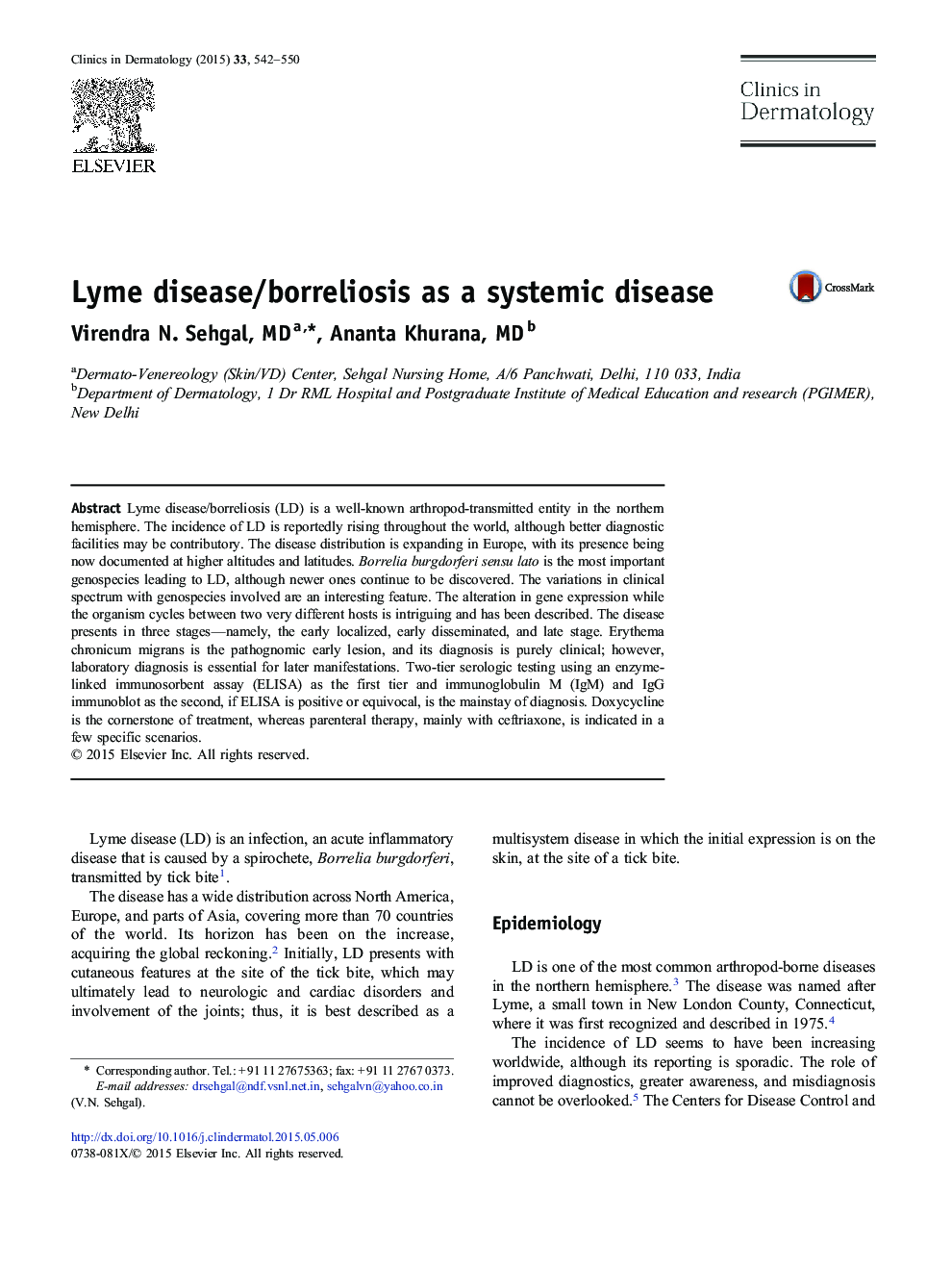| Article ID | Journal | Published Year | Pages | File Type |
|---|---|---|---|---|
| 3194017 | Clinics in Dermatology | 2015 | 9 Pages |
Lyme disease/borreliosis (LD) is a well-known arthropod-transmitted entity in the northern hemisphere. The incidence of LD is reportedly rising throughout the world, although better diagnostic facilities may be contributory. The disease distribution is expanding in Europe, with its presence being now documented at higher altitudes and latitudes. Borrelia burgdorferi sensu lato is the most important genospecies leading to LD, although newer ones continue to be discovered. The variations in clinical spectrum with genospecies involved are an interesting feature. The alteration in gene expression while the organism cycles between two very different hosts is intriguing and has been described. The disease presents in three stages—namely, the early localized, early disseminated, and late stage. Erythema chronicum migrans is the pathognomic early lesion, and its diagnosis is purely clinical; however, laboratory diagnosis is essential for later manifestations. Two-tier serologic testing using an enzyme-linked immunosorbent assay (ELISA) as the first tier and immunoglobulin M (IgM) and IgG immunoblot as the second, if ELISA is positive or equivocal, is the mainstay of diagnosis. Doxycycline is the cornerstone of treatment, whereas parenteral therapy, mainly with ceftriaxone, is indicated in a few specific scenarios.
